Birding The Cleveland Way – Kepwick to Osmotherley
Growing up on the northern edge of the North York Moors National Park, Richard has always wanted to walk the entire length of the Cleveland Way, to explore the landscape, birds and wildlife along this fabulous National Trail. His plan is to walk a different section every month over the course of 2024 and write a blog in the process. Joining him on these leisurely walks is artist Jo Ruth.
March 18 – Kepwick to Osmotherley
Starting the next section of our walk above the hamlet of Kepwick guaranteed spectacular views. Looking west with the sun on our backs we could even see the Yorkshire Dales National Park in the distance. With only six miles to Osmotherley we had plenty of time on this section of the trail for dawdling and birding.
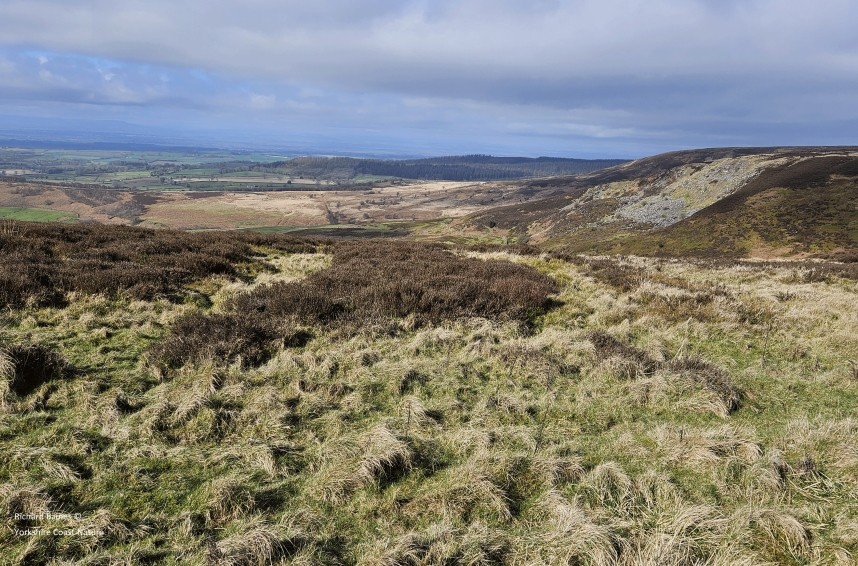
Kepwick moor looking west - March 2024 © Richard Baines
Over the grasslands beneath the Cleveland Way six Lapwings were chasing each other in the clear blue sky, a sure sign that breeding is underway. When they eventually returned to ground, I watched two birds feeding just the other side of the wall which runs north on the western side of the trail.
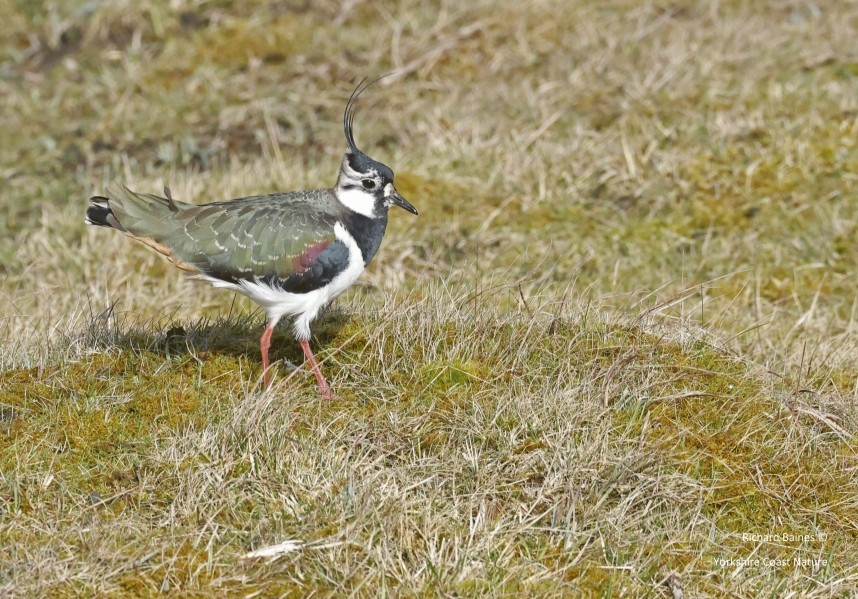
Northern Lapwing - Kepwick - March 2024 © Richard Baines
The close views allowed me to see something I had never seen before. The Lapwings used one foot to tap the ground before they picked out an invertebrate. A few small steps, followed by half a dozen rapid taps with one foot, then a few steps more and bingo, a small insect was picked from the grassland. I had only previously seen Herring Gulls do this foot tapping which is thought to trick worms into thinking rain is falling which pushes them higher up in the soil. Maybe these Lapwings were using a similar strategy to flush or flick insects from the grass. The speed they were feeding indicated it was more likely to relate to insects on the surface than worms in the soil.
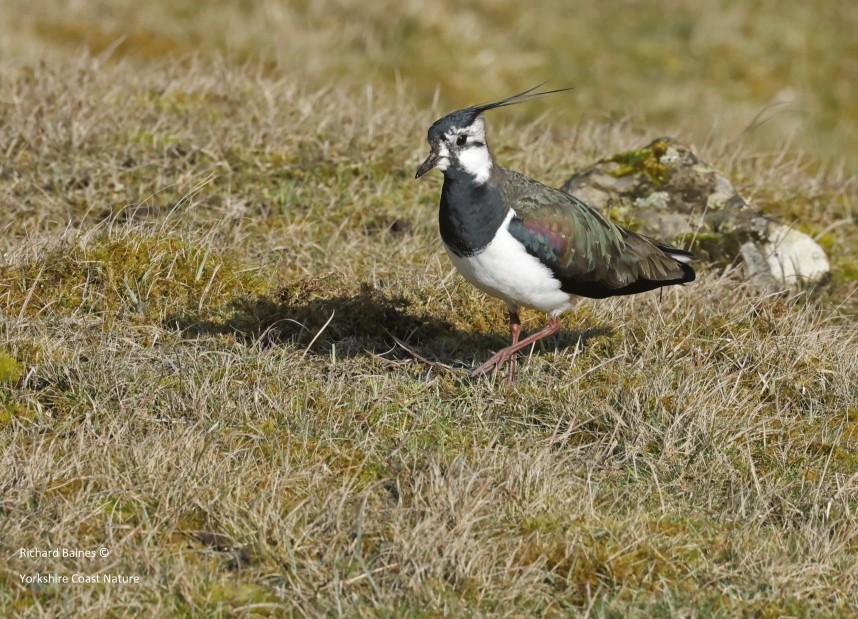
Northern Lapwing - Kepwick - March 2024 © Richard Baines
I asked myself, have Lapwings watched Herring Gulls and copied this trick, have they worked it out themselves and how long have they been doing it? There are so many wonderful mysteries in natural history and we never stop learning.
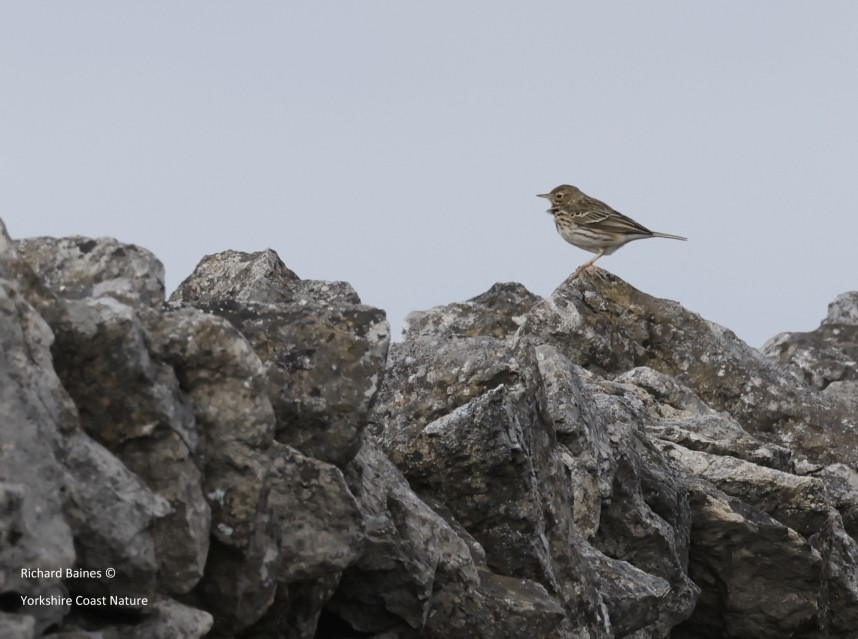
Meadow Pipit - Kepwick moor - March 2024 © Richard Baines
Walking north from Kepwick the trail is flanked on both sides by Heather moorland. We could hear distant calls of Curlews returning to nest on the moors. Meadow Pipits and Stonechats flew along in front of us and perched on the stone wall; a great look out when the landscape all around you is flat. These walls also provide habitat for nesting birds. Wrens often find a warm niche in the nooks and crannies where they can build a nest. The walls also help migrating birds which follow distinct landscape lines to aid navigation. They are important features not only for landscape conservation but also for our natural heritage.
On the open ridge to our west three Common Buzzards a Kestrel soared above the heather, best of all a Peregrine joined them briefly before moving off north. This was the first Peregrine we had seen on our journey, a great addition to our bird list.
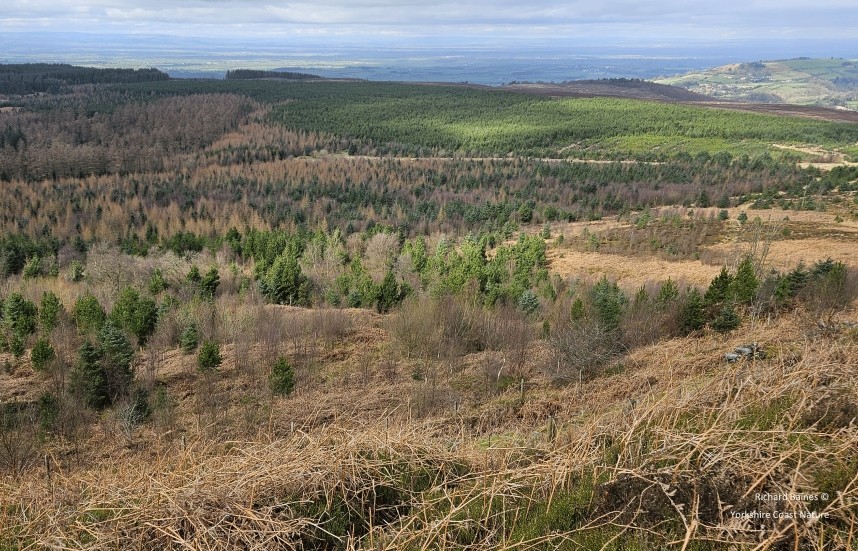
Silton Forest - March 2024 © Richard Baines
As the trail started to head downhill, an extensive view over Silton Forest opened up. Later in the spring this large area of mixed plantation woodland can be a good place to find exciting species such as Nightjar. Small numbers of Turtle Doves have also been heard here in recent years. As we walked down the path I heard the distinctive call of Crossbills in the forest. A male and a female had flown to drink from a puddle by the side of the wall.
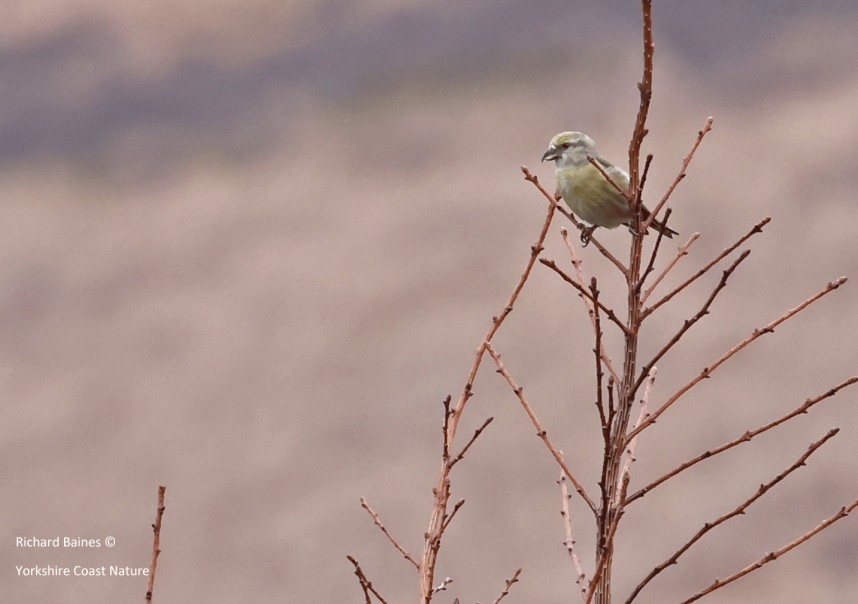
Common Crossbill (female) - Silton Forest - March 2024 © Richard Baines
Crossbills need to drink more often than many other songbirds due to their very dry diet of conifer cone seeds. The recent wet weather has given them plenty of opportunities to find water.
Oak Dale - March 2024 © Richard Baines 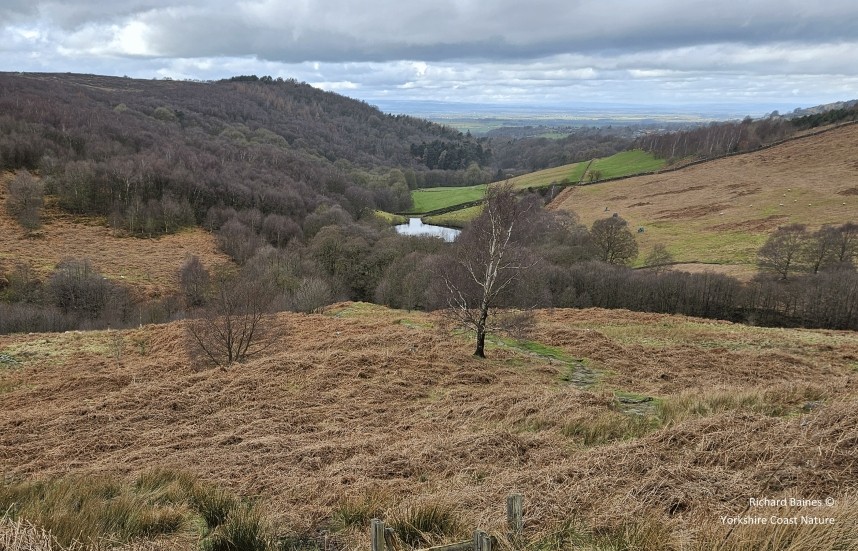
Near Square Corner the trail follows a paved path down into Oak Dale following the line of Oakdale Beck. The woodland here is a mix of native deciduous trees such as Oak and Alder with a good supply of dead wood, so great habitat for wildlife.
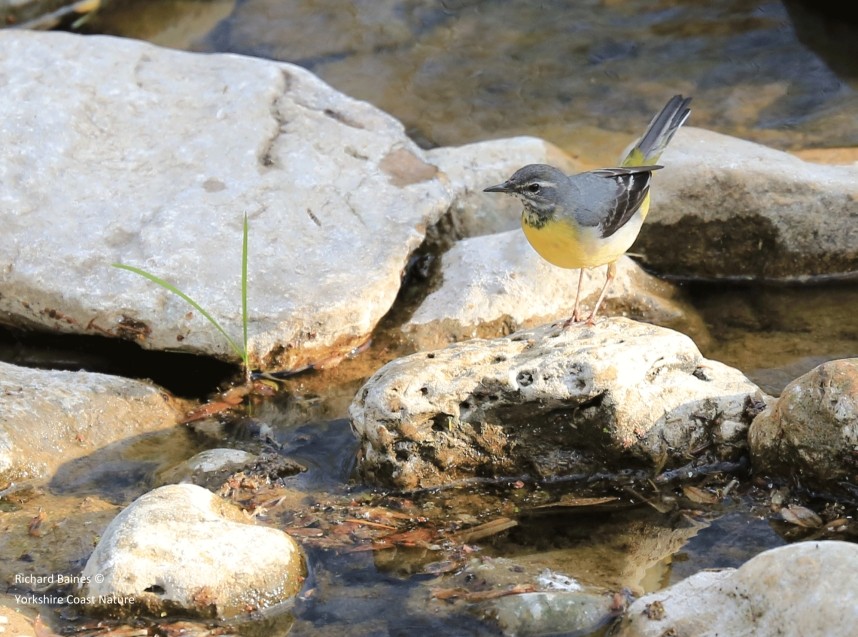
Grey Wagtail - North Yorkshire © Richard Baines
By the side of the stream, we found a pair of Grey Wagtails, the female carrying nesting material.
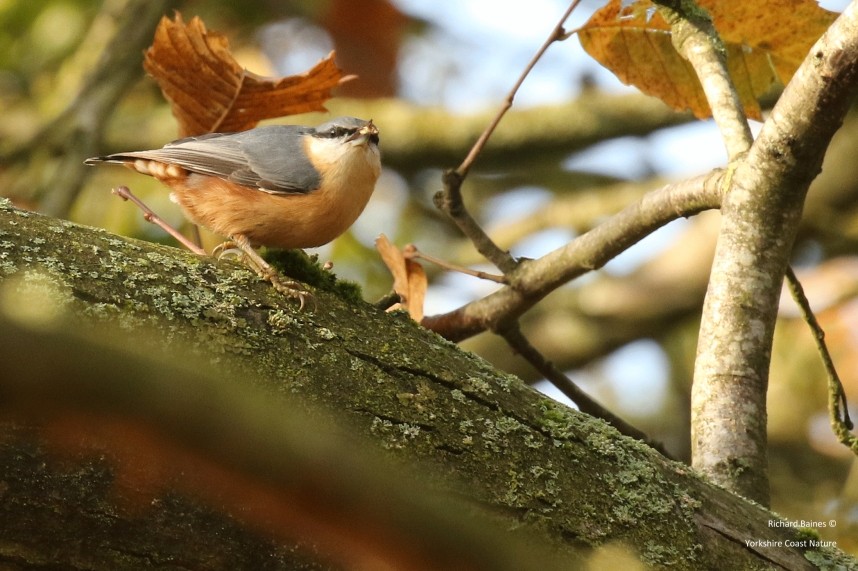
Common Nuthatch - North Yorkshire © Richard Baines
In the woodland Nuthatches were calling loudly with Great-spotted Woodpeckers, Treecreepers, Marsh Tits and Long-tailed Tits all busy either building nests or defending breeding territories. March is a great month for listening to and seeing our resident woodland birds.
Brambling (male) North Yorkshire © Richard Baines 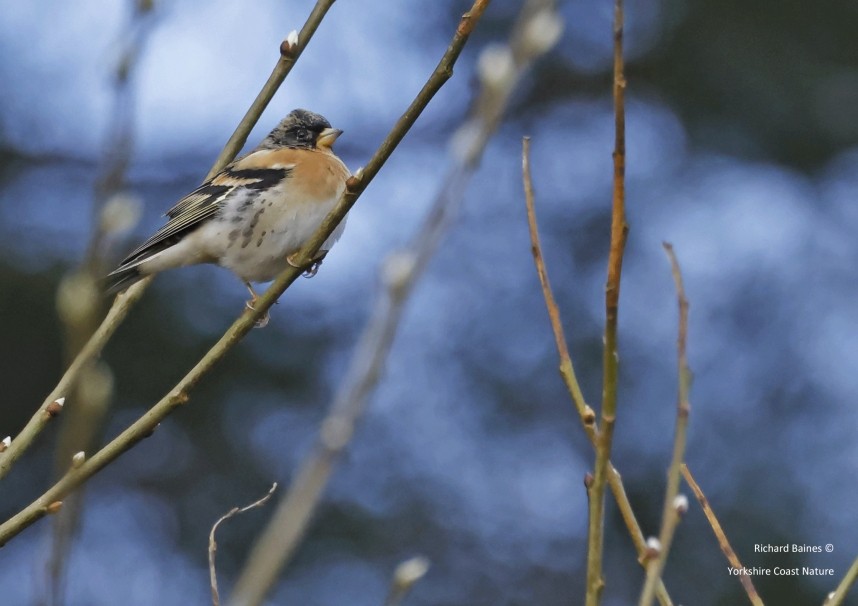
After enjoying the tranquillity of the woodland with the relaxing sounds of the stream and bird song, the path meets the minor road before heading north again across farmland near Woodside Farm. I could hear the sound of calling Tree Sparrows and out a nearby garden flew a male Brambling
Middlestye Bank woodland - March 2024 © Richard Baines 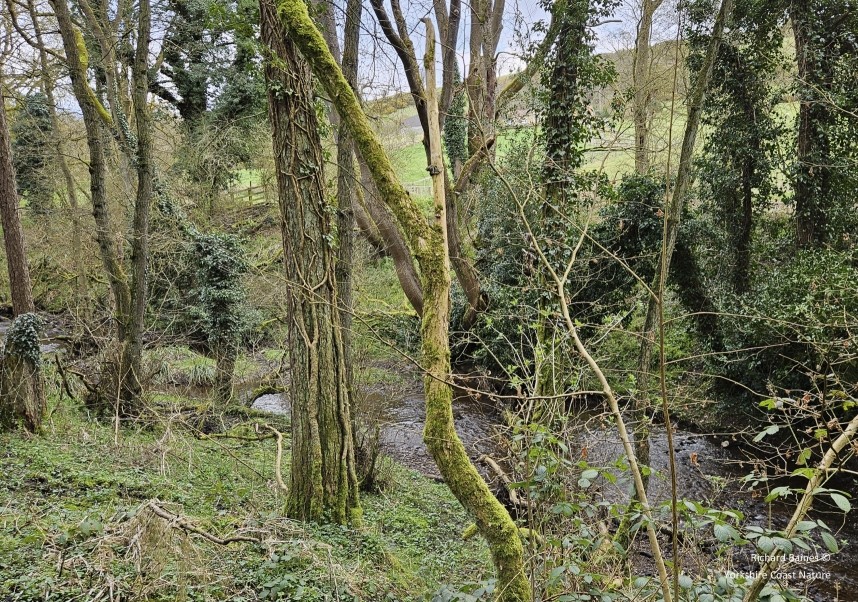
Before long we were back into Oak woodland which held a variety of ancient indicator plants such as Opposite-leaved Golden Saxifrage, English Bluebell and Wild Garlic. The Saxifrage was the only one in flower but it was great to see the first sprouting bluebells and garlic, a taste of early spring.
After winding its way around the western part of the village, the trail enters the picturesque streets. We arrived at a great time as the Osmotherley Tea & Coffee Shop was still open. Time for a cuppa and a cake!
Director and Wildlife Guide
Yorkshire Coast Nature



 Back to Blog
Back to Blog
